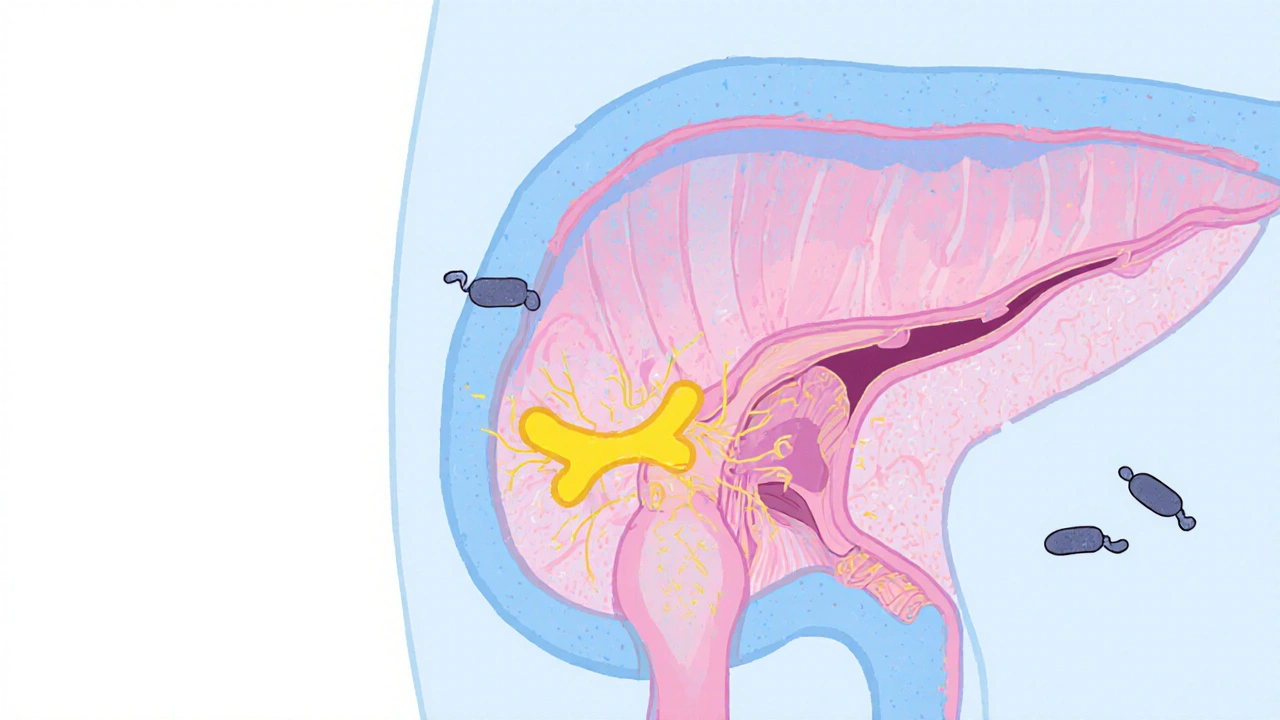When dealing with urinary tract infection, an infection that can affect any part of the urinary system, most often the bladder and urethra. Also known as UTI, it typically causes burning during urination, frequent urges, and cloudy urine. Cystitis, the inflammation of the bladder wall is the most common form of a urinary tract infection, so you’ll hear the two terms used interchangeably. Phenazopyridine, an over‑the‑counter urinary pain reliever often appears in discussions because it can ease the burning sensation while antibiotics clear the infection. In short, urinary tract infection encompasses cystitis, urethritis, and kidney involvement, each requiring a tailored approach.
Most UTIs begin when bacteria from the gut or skin travel up the urethra and multiply in the bladder. The most frequent culprit is Escherichia coli, a gut bacterium that easily adheres to the urinary lining. When the immune system can’t stop the growth, symptoms appear. Doctors usually prescribe antibiotics, drugs that kill or inhibit bacterial replication such as trimethoprim‑sulfamethoxazole, nitrofurantoin, or fosfomycin. The rule of thumb is: antibiotics clear the infection, while Phenazopyridine handles the discomfort. It’s a two‑step process – one tackles the cause, the other tackles the symptom. If the infection spreads to the kidneys, the treatment course lengthens and may require stronger agents.
Prevention hinges on simple habits. Staying hydrated dilutes urine and helps flush bacteria out. Urinating after sex reduces the chance of bacterial transfer. Proper wiping front‑to‑back, avoiding irritating feminine products, and limiting prolonged catheter use are all practical steps. Some people turn to probiotic foods or D‑mannose supplements; the evidence is still emerging, but many report fewer recurrences. When you suspect a UTI, a quick dipstick urinalysis or a lab culture confirms the diagnosis, letting the clinician choose the right antibiotic. The sooner you treat, the less likely you’ll face complications like pyelonephritis or chronic bladder irritation.
Below you’ll find a curated set of articles that dive deeper into each aspect mentioned here – from the science behind Phenazopyridine to side‑by‑side drug comparisons, diagnostic tips, and lifestyle advice. Whether you’re looking for a clear explanation of symptoms, a detailed review of treatment options, or practical ways to keep UTIs at bay, the posts that follow will give you actionable insight.

Explore whether flavoxate can lower urinary tract infection rates, its mechanism, evidence, safety, and practical tips for using it alongside proven prevention methods.